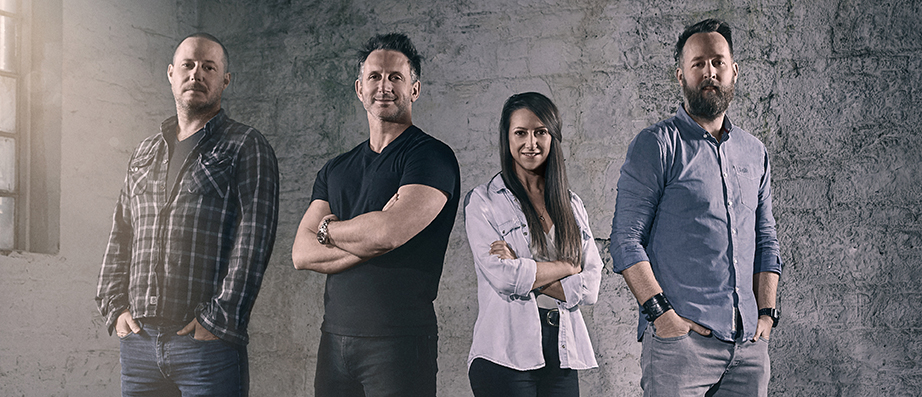
Photography by Brendan Duffy.
After ten years in the digital marketing business, the Dublin-based agency eightytwenty has been working on a new agency model that places behavioral data at the epicenter of its client offering and, as CEO David Connor explains to John McGee, it has met with considerable success.
As one of the early pioneers of Ireland’s digital marketing industry, David Connor, the founder and CEO of eightytwenty, has seen it all. From the early days when many companies didn’t even have a website, never mind a digital strategy to the rise in social media and now the data-powered marketing universe that promises to deliver so much. He’s been there, done that and now has the t-shirt and the scars to prove it.
And like the ongoing evolution of the digital marketplace, eightytwenty has evolved over time to provide a new type of agency model that harnesses behavioral data to power its clients’ businesses. It’s this development that led the world’s largest communications group WPP to acquire a minority stake in the business last year with eightytwenty now firmly ensconced in WPP’s Irish HQ in Ely Place.
“When we first met WPP, we had about 15 staff and some really good clients. Although we were small, WPP was attracted to our business because of our award-winning creative work and the potential of our data-driven proposition to address the challenges facing marketers today,” says David Connor.
1TRUST IN MARKETING
“The troubling truth is this: many companies are losing trust in marketing as some marketers continue to position themselves as experts in advertising, millennials and the latest digital fads – instead of being growth drivers. Faced with sluggish growth, many of the consumer goods giants like Colgate-Palmolive, Coty, Mondelēz and Coca-Cola have reacted by installing chief growth officers to accelerate growth efforts or to bring focus and growth to their platforms,” he says.
“But refreshingly, there is a movement among progressive marketers to become more growth-oriented and consumer-centered and to move away from being seen as cost-centers,” says Connor.
“The fact is, marketing is highly strategic and is now becoming more data-driven, which can help marketers tell a clear story of where resources should be invested and what the return on investment is. The opportunity for marketers is to take advantage of the data they are able to collect in order to close the visibility gap between the activity being generated and the returns they’re driving,” he adds.
“As brands move further into data-driven models in a bid to better understand consumer behavior, the role of marketers will continue to adapt. A strict discipline is required behind the scenes within a marketing-led organization- behind the creative, campaigns, always-on programmes, DTC initiatives, and the other customer-facing tactics. This discipline focuses on a clear line of sight into all marketing investments, a unified approach to marketing planning, and tight, accurate, actionable measurements,” he says.
He admits that creating this unified approach to marketing planning is no mean feat for clients and it’s made even more difficult thanks to the complexity associated with identifying or selecting the right type of agency partner that can support or lead a more growth and consumer oriented approach.
2THE THIRD WAY
“Thanks to 100 years of architecting siloed marketing disciplines, we’re now faced with more questions than answers. What does ‘media’ mean these days? Or ‘creative’? Or ‘digital’? How about ‘technology’? Some briefs are now so open it’s not clear who should be addressing them – the ad agency? Media? Digital? Social? PR? All of the above? Or none of them? What’s for sure is that no-one has the ‘right’ to any brief any longer, although plenty are mistakenly under the impression they do,” he says.
He says that agencies don’t have all the answers but suggests there is a ’third way.’
“We do have the most important North Star to address the issues that best serves our clients’ businesses and brands- the ability to answer through the lens of the consumer with absolute conviction. Powered by behavioral insight, we bring creative, media and tech together under the one roof, as a single strategic force to deliver real growth for our clients. We call this the ‘Third Way’.
“The Third Way doesn’t blow up the notion of the ‘Big Idea’ in the same way it doesn’t replace campaigns with a plethora of irrelevant content. Instead, it brings together the best of bigger creative campaigns and smaller always-on creative campaigns guided by how the consumer really behaves,” says Connor.
He says that the Third Way doesn’t discriminate between creative, media or tech. “Instead, it brings together these disciplines in order to optimize creative, campaigns and platforms by the hour, day, week or month using live behavioral data. And the Third Way doesn’t officially have a stop or start date in the same way that consumers don’t always buy during specific six- week periods. Instead, it provides an opportunity for continuous learning and improvement designed to deliver highly relevant and effective work that can be properly attributed,” he adds.
3TAPPING BEHAVIORAL DATA
“I’ve always been interested in behavioral data and I really felt we were on the cusp of doing something really great with it. The first thing we did was take behavioral data and use it to do better planning. So, inside we’re doing business planning and advertising is a sub-set of that. And business planning starts with how can we grow a client’s business. The planning team does its magic using behavioral analysis, then mapping customer journeys from that data. And then out of that comes – for communication purposes – the messaging hierarchy and then the creative work. So, it’s been interesting to see how this type of data is informing the planning process which is in turn informing the creative process. But the behavioral data also helps us plan our media better and it also means that the planning team, the creative team, the media team and our production studio work hand in hand. And then when the work is live, we use the live data to optimize the campaigns including the creative. This is where the big disconnect in the industry lies at the moment. If you have a media agency over here and a creative agency somewhere else – which is the reality for lots of brands- how can you optimize the creative and media in-campaign so that its most effective?” says Connor.
So far, the agency has met with considerable success with this approach.
“We are seeing amazing results in terms of the return on investment and advertising spend and it’s providing our clients and their marketing teams with much more ammunition to actually start to protect their budgets or grow them,” he says.
In the space of two years the agency has more than doubled in size and now employs 36 staff, across a number of different disciplines. And it has recently added the likes of Glanbia Performance Nutrition and Trocaire to its list of clients that includes Aldi, Opel and Universal Pictures.
“We don’t have the desire to have a huge client roster. We prefer to focus on working as a strategic growth partner for a select number of marketing-led companies. There is huge potential in Europe, particularly in light of Brexit but also because of how well our way of working fits with the changing needs of brands who market inside and outside of Ireland. We currently have campaigns running in Germany, the UK, France and as far as NYC in the USA. So, we’re already up and running internationally with our model,” says Connor.
4INVESTING IN TALENT
“With the backing of WPP and the support of the Ogilvy network, we’ve been investing in training our existing talent and recruiting specialist talent from around the world. An important part of this agenda was forming a leadership team with the right mix of experience for the evolving needs of our clients. We already had a great creative director in Alexis Bouckaert, who has worked for the likes of Rothco and Cybercom. We brought in Niamh Haughey who had led the digital transformation for SHV Energy- the parent company of Calor Gas- in 20 countries. Niamh now heads up the Strategy and Performance Marketing side of our business. And we brought in Kyle Marquis as Client Partnership Director. When he was at Saatchi & Saatchi, he headed up the whole of Africa for Guinness and was also a former global account director for Adidas with 180 Amsterdam,” he says.
“We now have a planning team of eight, which is quite a big and would probably surprise a lot of people. We have a media campaign team which plans and manages search, social and programmatic for practically all of our clients; we have a client service team, several creative teams and a production studio that has all the modern digital production skills we need,” he says.
One thing David Connor is certain about and that’s the need for change in the industry. “For structural, financial, political or even egotistical reasons there are extremely difficult questions and issues facing many in the industry who cannot answer them with honesty. Those who can are at an immediate advantage. In this increasingly pressurised economy, with increasing competition for both brands and agencies, this is where we are heading. The winners will always have the most talented, the most ambitious and the most hard-working but, increasingly, it will be the ones brave enough to make the changes required to focus on the things that matter,” he concludes.
First published in Irish Marketing Journal (IMJ January 2018)© to order back issues please call 016611660




















